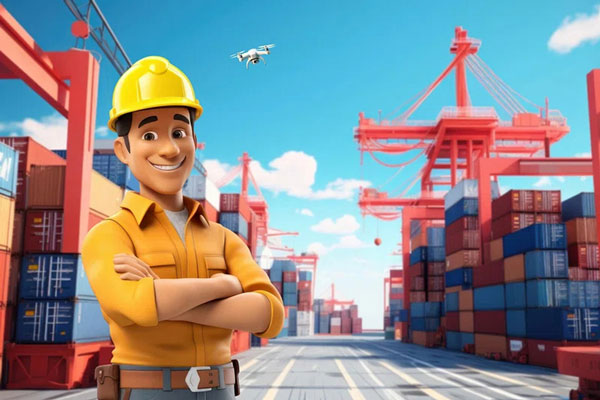Aerial visualization of worksites has proven to be valuable throughout the construction process. However, platforms like Google Earth are not sufficient. The imagery gained from static sources is too often out of date to be useful, of low resolution quality or obscured by clouds. Walking the sites in person to develop topographical information is time-consuming and costly.
Enter UAVs (Unmanned Aerial Vehicles), commonly known as drones. Drones open up new worlds of possibilities beyond attractive marketing presentations. The real-time information gathered using light detection and ranging sensors (LiDAR) and cameras, sent back to base, can be converted into highly detailed 2D and 3D imagery that can in turn be incorporated into BIM programs.
This is not only helpful for monitoring project progress but also can add a layer of protection.
“Drones can ensure that health and safety is maintained during the performance of the work,” Edward Lynde, a partner with Fasken Martineau DuMoulin LLP, told the Daily Commercial News. “Drones can also be used to monitor the construction site to ensure that no theft or vandalism occurs.”
Lynde pointed out the visual evidence obtained by drones imagery forms part of the project‘s permanent record. In that way, the data can assist in any claims between parties, such as assertions or defence of delay or productivity claims, and alleged defects.
Furthermore, drone data can ensure all work is being conducted in compliance with applicable laws.
“Most contracts, in some form or another, will provide that the performance of the work or services needs to be in compliance with applicable law,” Lynde said.
Emily Donaher, an associate at Faegre Drinker Biddle & Reath LLP, puts it another way, saying drones can actually reduce the risk of litigation.
Deciding to use drones on a worksite requires consideration in advance.
Tom Critchfield, specialty advisory risk partner with international insurer Marsh McLennan, writes an incident involving a drone, including any malfunction, could have serious adverse effects, not the least of which is reputational damage to the project partners.
For example, failure to train site workers to avoid distraction by overflying drones could lead to increased incidents. A falling drone could cause third party damage.
Furthermore, any issues concerning individual privacy and search and seizure must be dealt with.
“Drones record all information, not just relevant information,” writes Erin Borek of Phillips Lytle LLP. “They collect data on all people and objects within a subject area, recording things like license plates, clothing, body language or even conversations.”
Operational care must be taken to not collide with cranes or any overhead utilities. In that regard, it is important all regulations concerning the piloting of drones have been met.
Included within these regulations are airspace restrictions that might apply near the building site.
“You can never fly outside Canadian Domestic Airspace, and you can never fly within restricted airspace unless you’re actually a Special Use Restricted Airspace drone pilot and are actively doing your job with your drone,” says Alberta-based drone training service Victory UAV.
And obviously, a pilot cannot drink and fly.

It’s a serious matter, said Lynde.
“Users are considered to be pilots pursuant to federal laws,” Lynde said. “Accordingly, drone pilots must follow rules and regulations prescribed by Transport Canada and specifically the Canadian Aviation Regulations relating to Remotely Piloted Aircraft Systems, which include requirements regarding registration of the drone and pilot certificate, amongst others, depending on the category of operation.
“Failure to comply with the laws applicable to drones could also be considered a breach of contract, potentially leading to remedies asserted by the innocent party as against the defaulting party,” Lynde added.
It could also attract criminal charges under the criminal code, including offences related to air safety, mischief, trespass, and privacy.
Drones are one of the most effective new technologies in construction today. However, given the complexities surrounding their use, Critchfield suggests effective risk management.
“Risk transfer can give confidence to the project, your business, and your team.”
John Bleasby is a Coldwater, Ont.-based freelance writer. Send comments and Legal Notes column ideas to editor@dailycommercialnews.com.





Recent Comments
comments for this post are closed